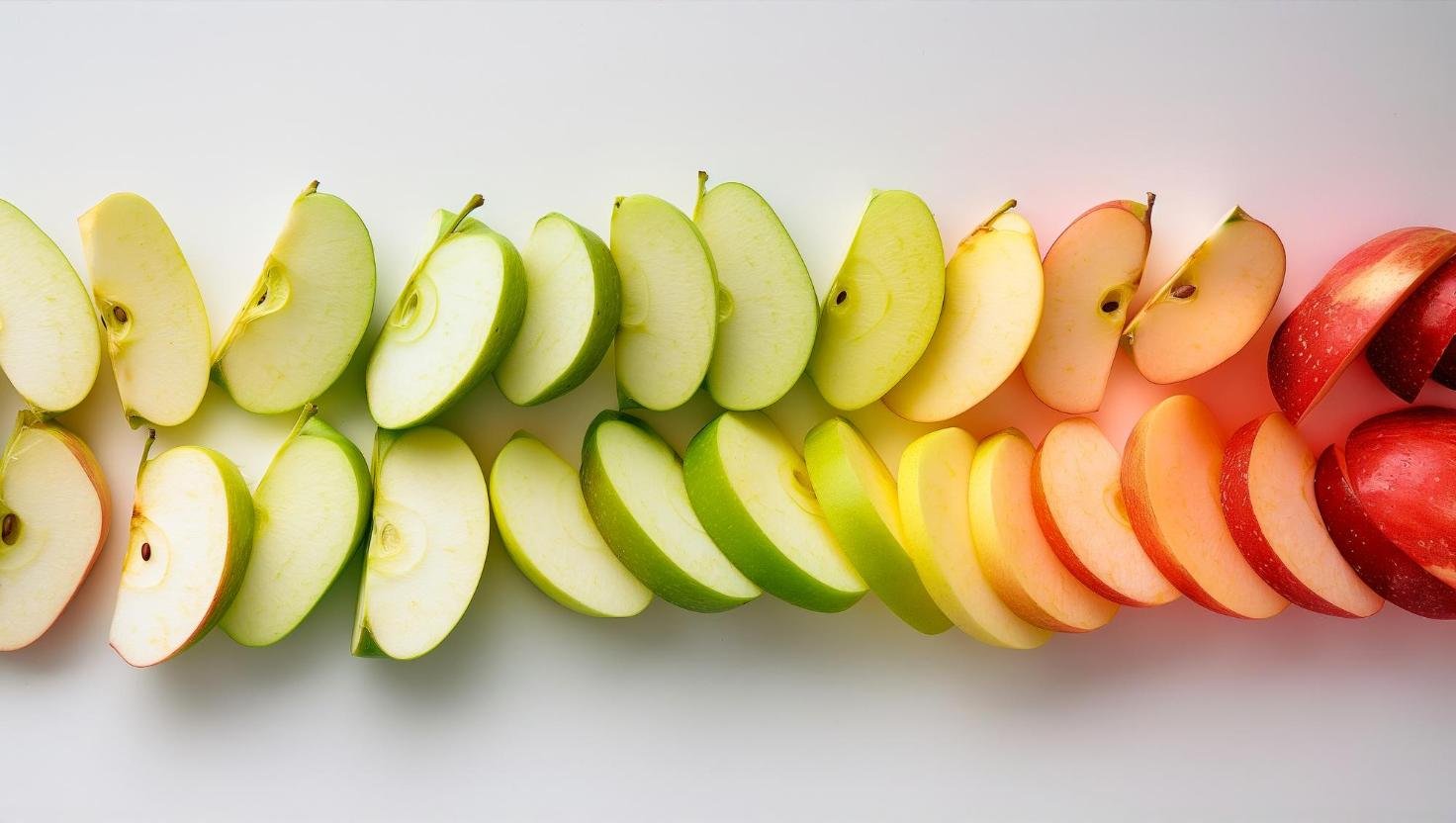Apples are among the most popular fruits worldwide, appreciated not just for their flavor, but also for their powerful apple benefits. What many people don’t realize is that the color of an apple isn’t just skin-deep—it can significantly influence its nutritional profile and health impact. In this comprehensive guide, we break down the benefits of red, green, and yellow apples, offering science-backed insights and expert tips to help you make the healthiest choice for your diet.
The Universal Health Benefits of Apples
Regardless of their color, all apples share a baseline of impressive nutritional properties. Here are the foundational health benefits common to most apple varieties:
- Rich in fiber, particularly pectin, which aids digestion and supports gut health.
- High in vitamin C, boosting immunity and promoting skin health.
- Packed with antioxidants, which reduce oxidative stress and inflammation.
- Low in calories, making them an ideal snack for weight management.
- Support heart health by lowering LDL cholesterol and stabilizing blood pressure.
Numerous studies, including those published in the Journal of Nutrition and American Journal of Clinical Nutrition, confirm these benefits, linking regular apple consumption to reduced risk of chronic diseases such as cardiovascular disease, diabetes, and certain cancers.
Why Apple Color Matters: The Science Behind the Shades
The color of an apple—determined by its variety and pigmentation—affects its nutrient content. Each color offers unique compounds and health-promoting properties:
Red Apples
Popular varieties: Red Delicious, Fuji, Gala, Empire
Key Benefits:
- Rich in anthocyanins, powerful antioxidants found in red and purple fruits.
- Support heart and brain health, and may help reduce the risk of Alzheimer’s disease.
- Sweeter taste makes them more appealing as snacks or in desserts.
- Ideal for boosting antioxidant intake when eaten with the skin.
Expert Insight: Anthocyanins found in red apples have been linked to improved memory and reduced inflammation in studies from Harvard Medical School.
Green Apples
Popular varieties: Granny Smith, Crispin, Pippin
Key Benefits:
- Lower in sugar and carbohydrates, making them better for blood sugar control.
- Higher in fiber than red or yellow apples, supporting digestive and metabolic health.
- Their tartness stimulates saliva production, promoting oral health.
- Excellent for weight management due to high satiety and low glycemic impact.
Research Note: A study in Appetite Journal showed that eating green apples before meals can reduce total calorie intake by up to 15%.
Yellow Apples
Popular varieties: Golden Delicious, Opal, Ginger Gold
Key Benefits:
- Contain carotenoids like lutein and zeaxanthin, which support eye health.
- Offer a mild flavor, suitable for baking or salads.
- Provide a balance of sweetness and acidity.
- Still contain antioxidants, though generally in lower concentrations than red apples.
Did You Know? Lutein and zeaxanthin in yellow apples are the same nutrients found in leafy greens and are essential for preventing age-related macular degeneration.
Nutritional Comparison Table: Apple Benefits by Color
| Feature/Benefit | Red Apples | Green Apples | Yellow Apples |
|---|---|---|---|
| Sugar Content | High | Low | Moderate |
| Fiber Content | Moderate | High | Moderate |
| Antioxidants | High (Anthocyanins) | Moderate | Moderate |
| Unique Nutrients | Anthocyanins | High Fiber, Polyphenols | Carotenoids (Lutein) |
| Flavor Profile | Sweet | Tart | Mild/Sweet |
| Best For | Heart/Brain Health | Blood Sugar & Weight | Eye Health & Digestion |
Choosing the Right Apple for Your Health Goals

If you’re unsure which apple color suits your dietary needs, here are some tips:
- For weight loss or diabetes management: Choose green apples for their lower sugar content and higher fiber.
- For heart and brain health: Opt for red apples rich in anthocyanins.
- For eye health and gentle digestion: Pick yellow apples, especially if you prefer a milder flavor.
Expert Tips:
- Always eat apples with the skin to maximize fiber and antioxidant intake.
- Choose organic apples when possible to avoid pesticide exposure (apples are frequently on the “Dirty Dozen” list).
- Store apples in the fridge to keep them crisp and preserve nutrients.
An Apple a Day, Tailored Your Way
Apples are a nutritional powerhouse, but not all apples are created equal. By understanding how the color of an apple influences its health benefits, you can make smarter choices aligned with your wellness goals. Whether you’re managing blood sugar, boosting brain function, or simply enjoying a healthy snack, there’s an apple that’s perfect for you.
Take Action: Next time you’re at the grocery store or farmer’s market, don’t just pick any apple—choose the one that fits your health needs best.


